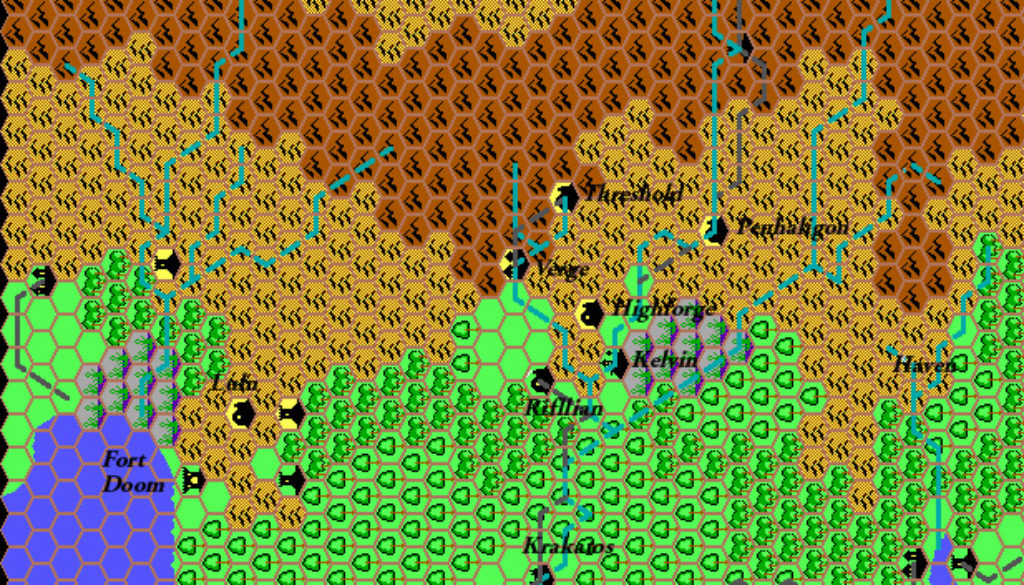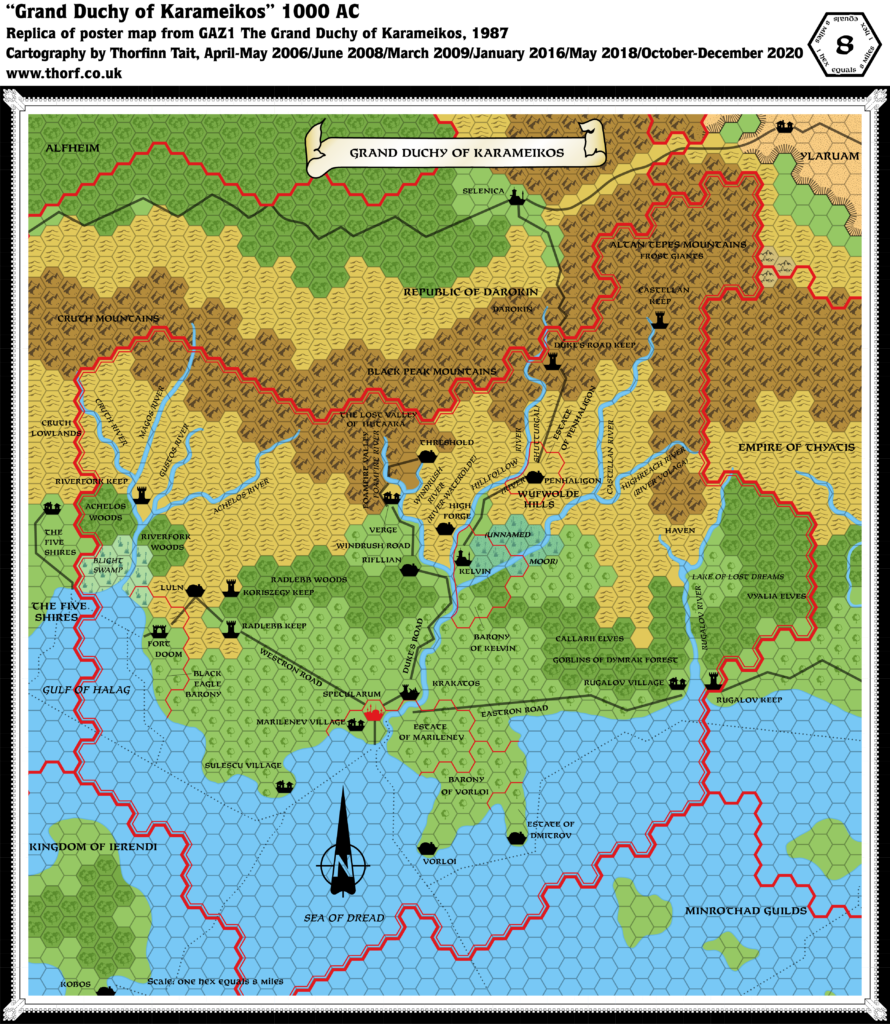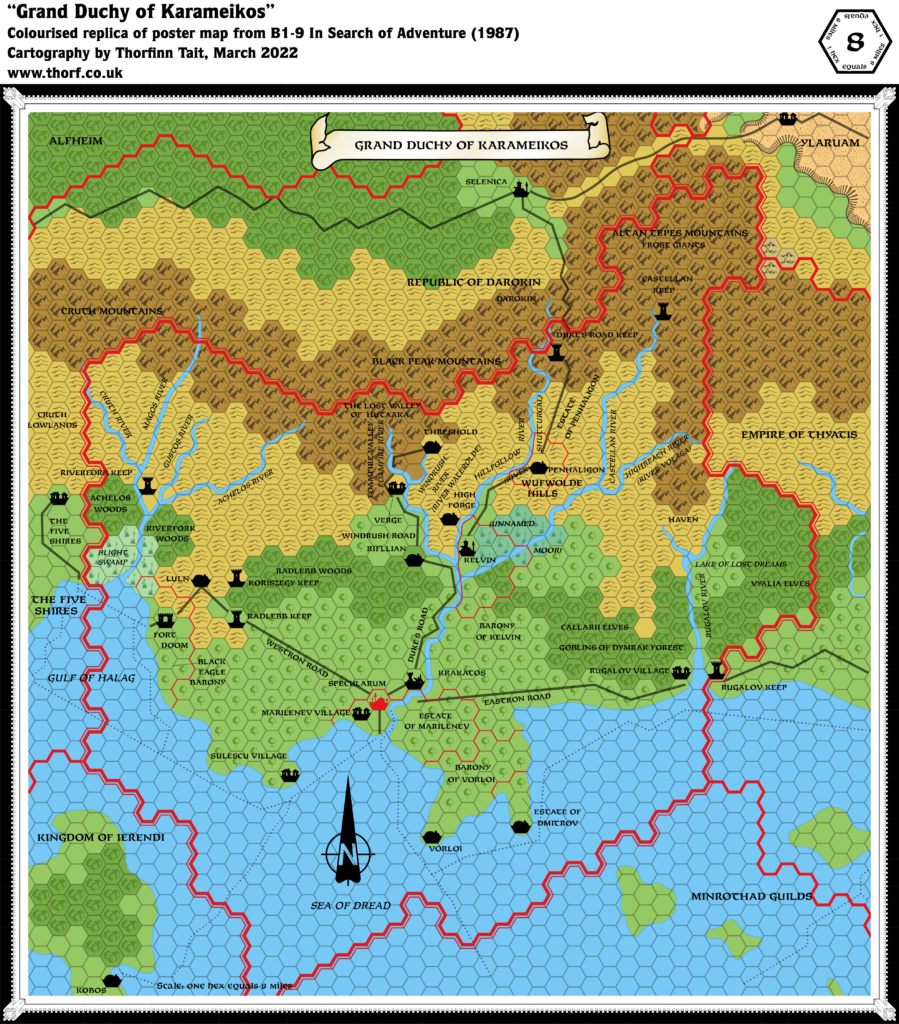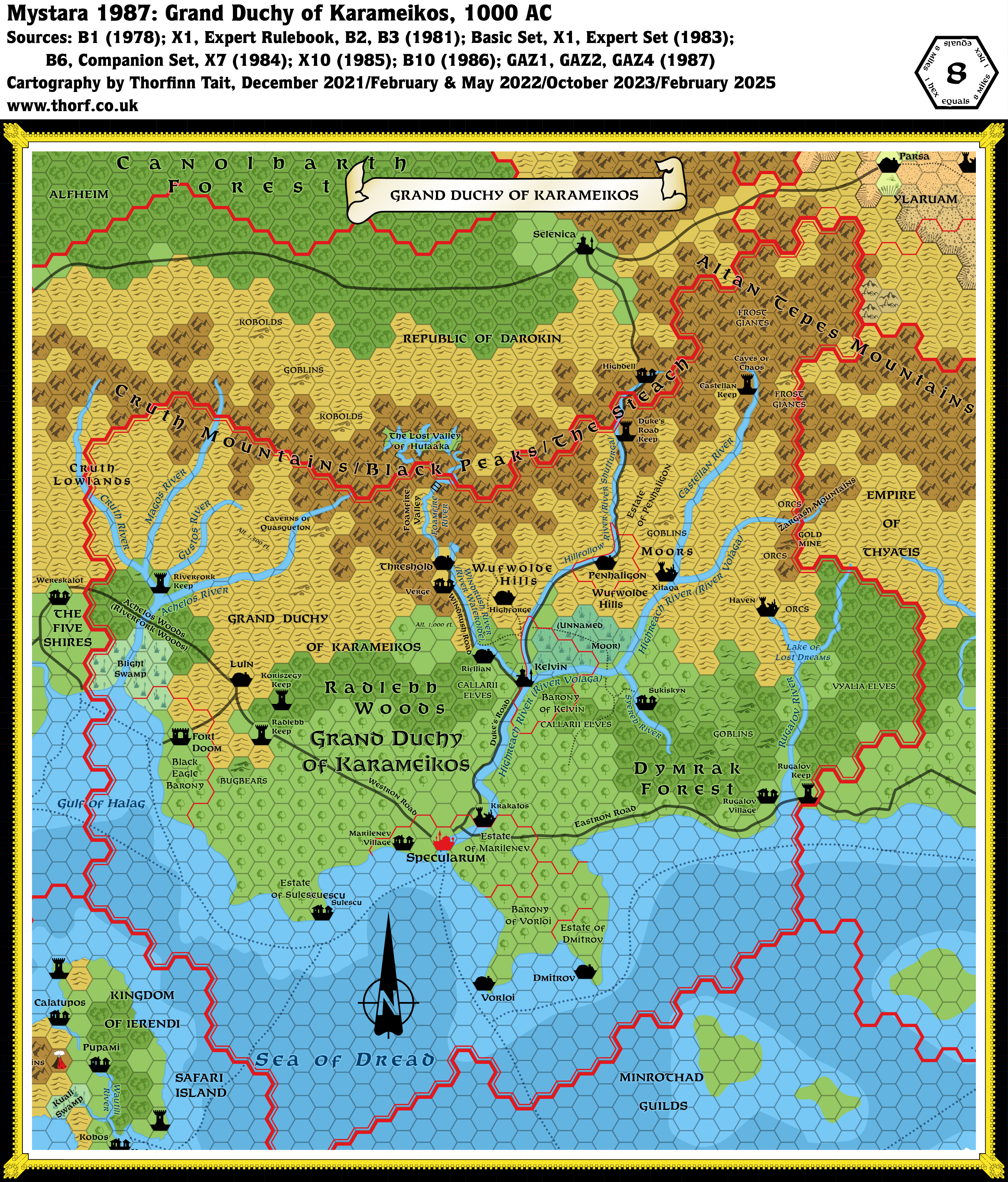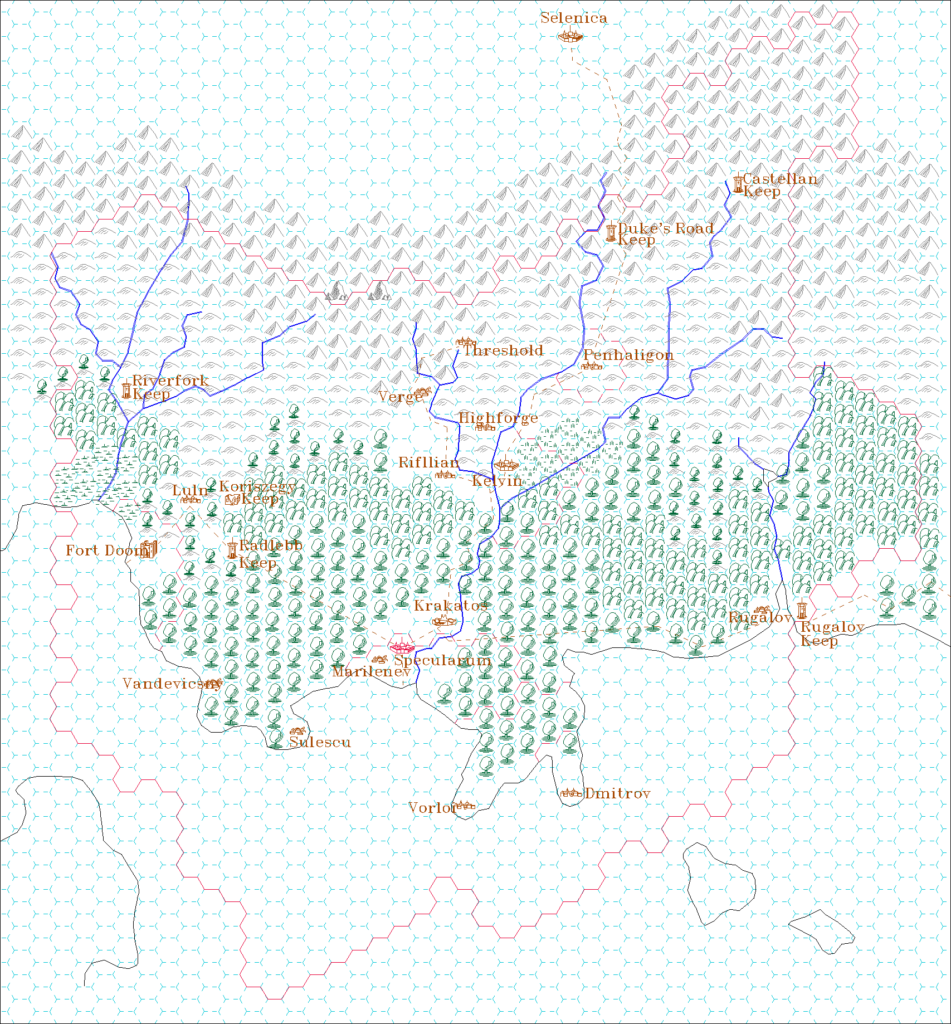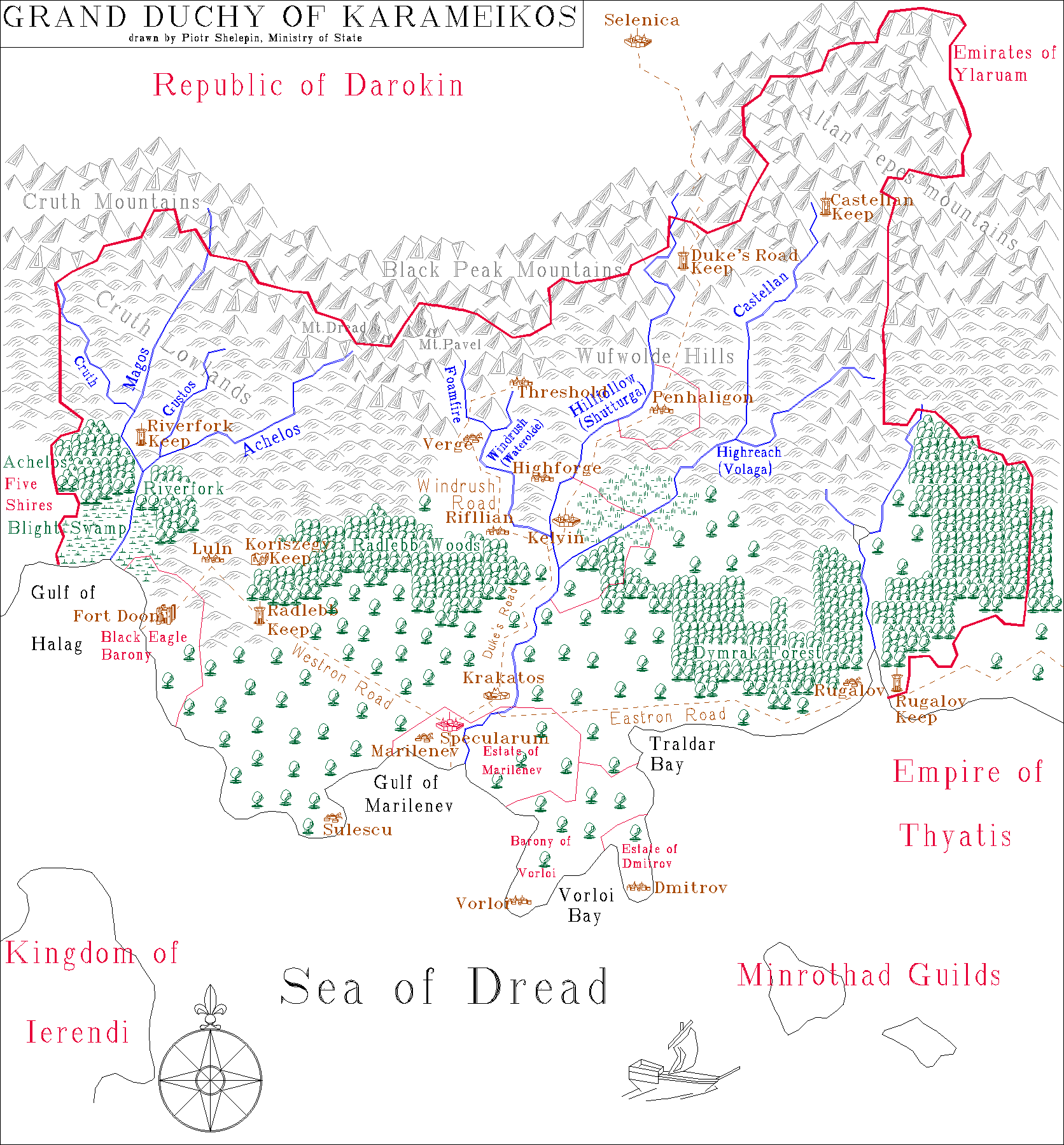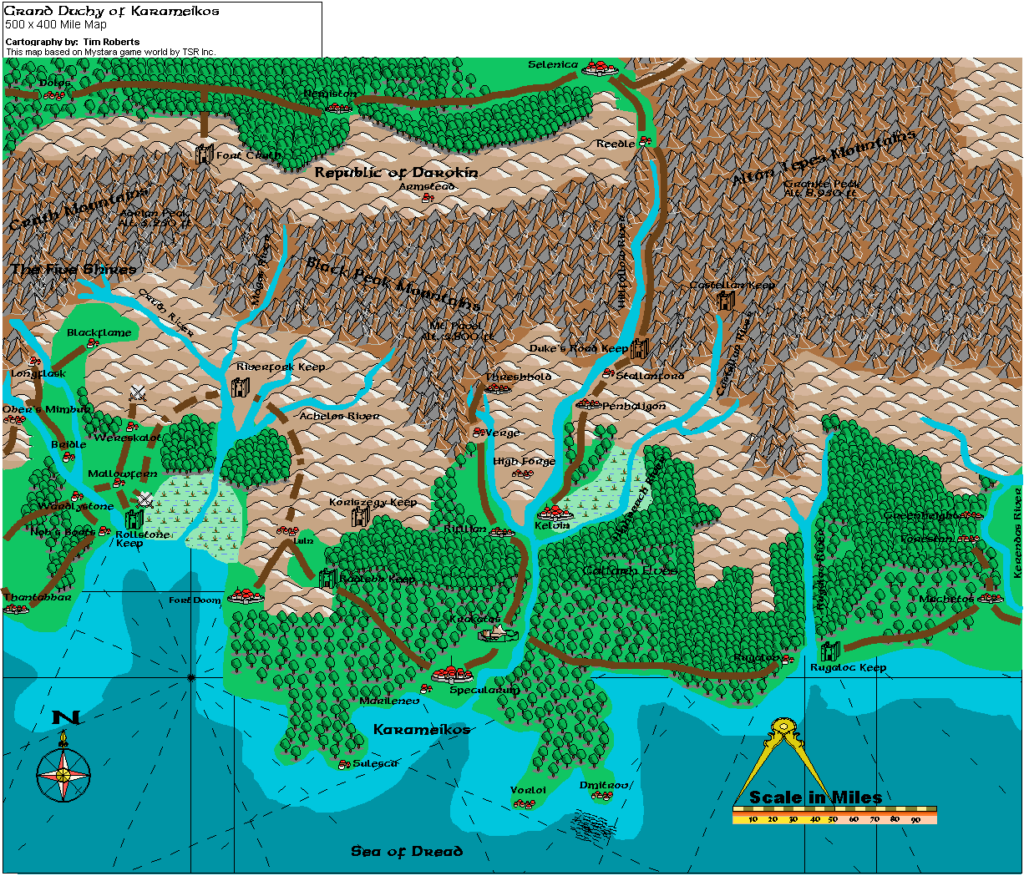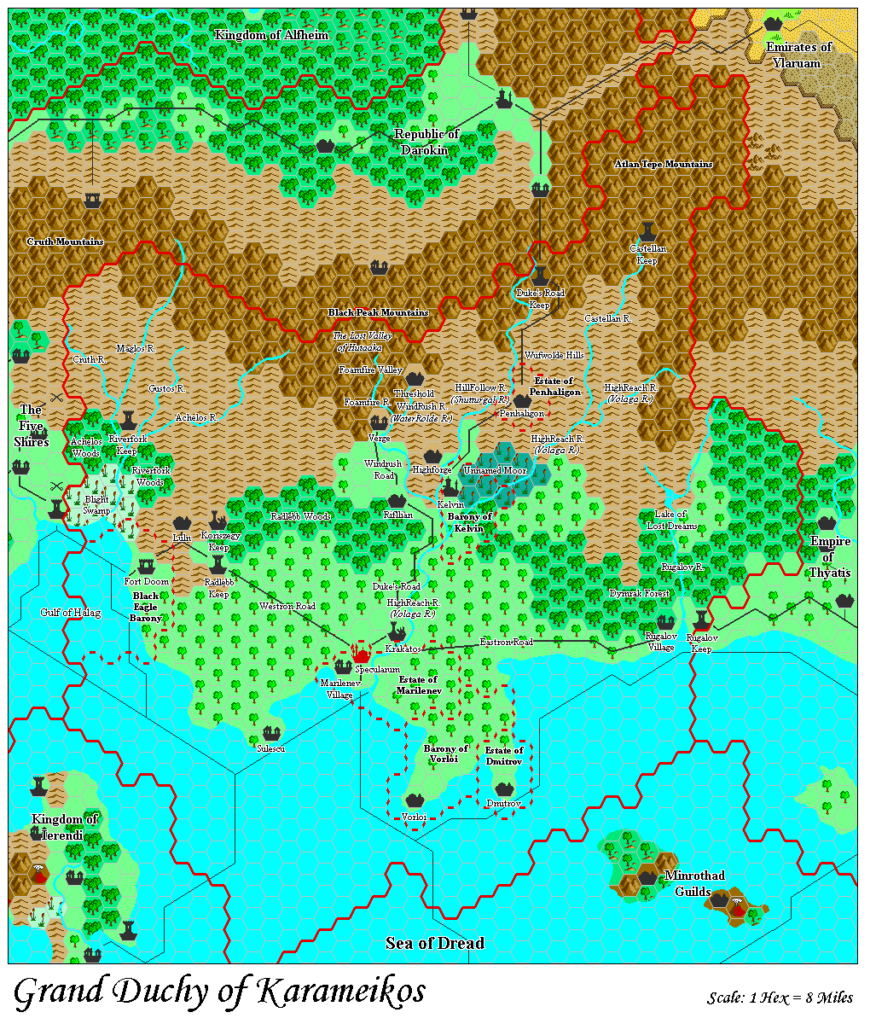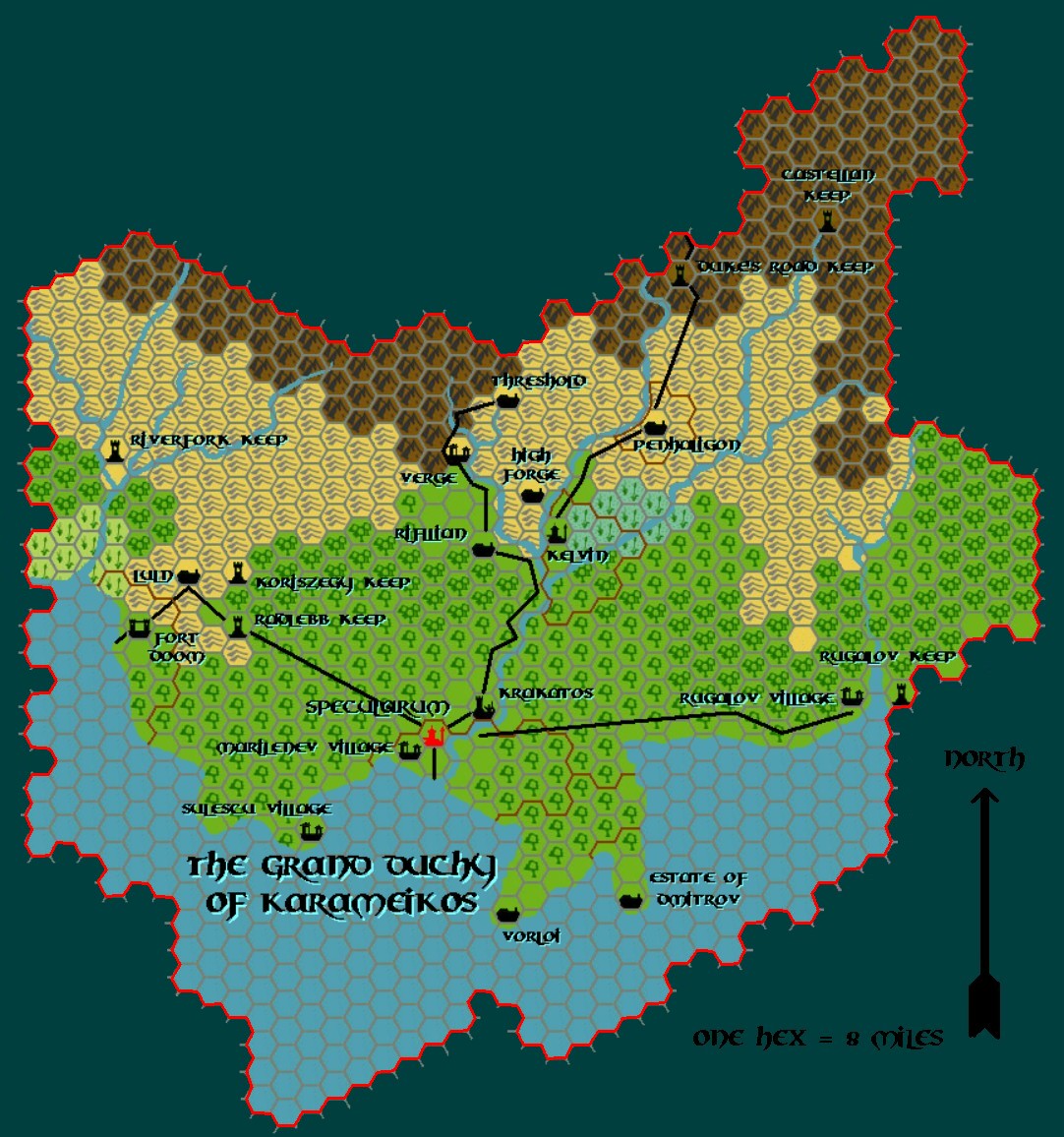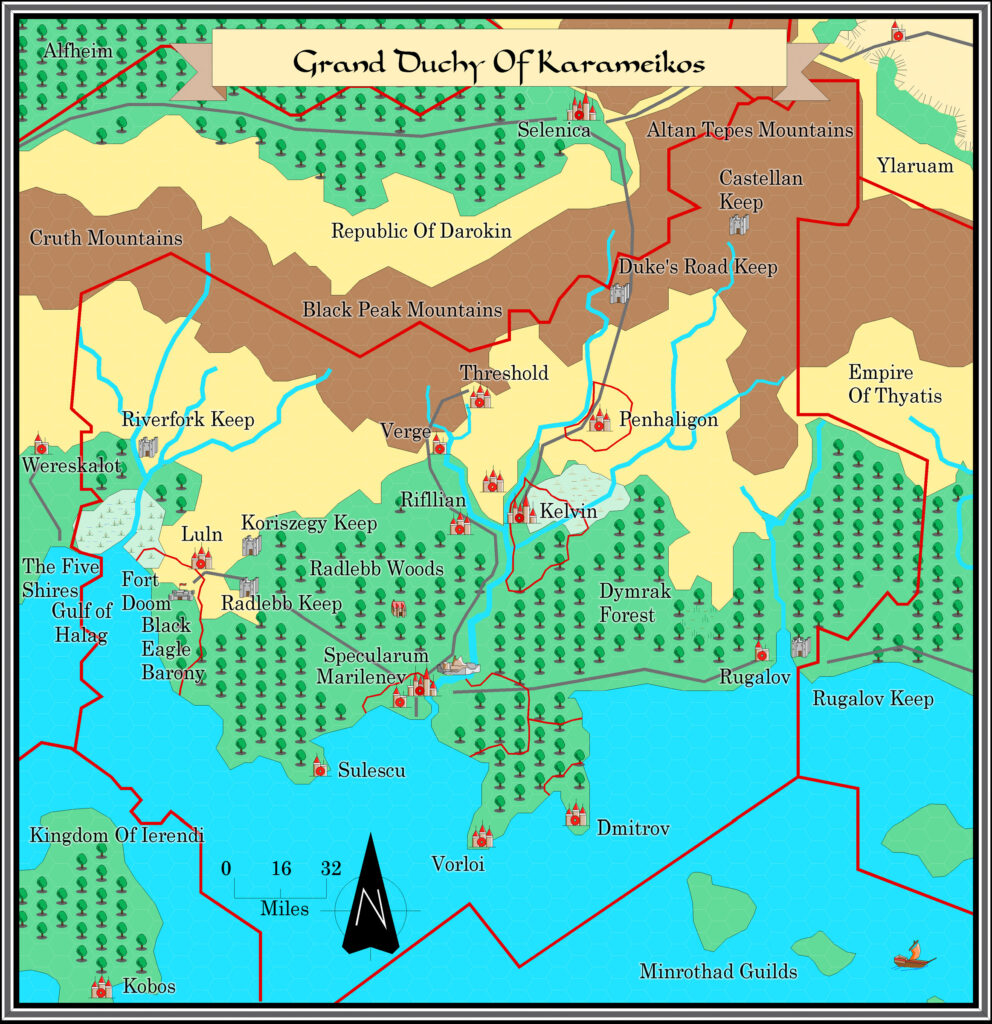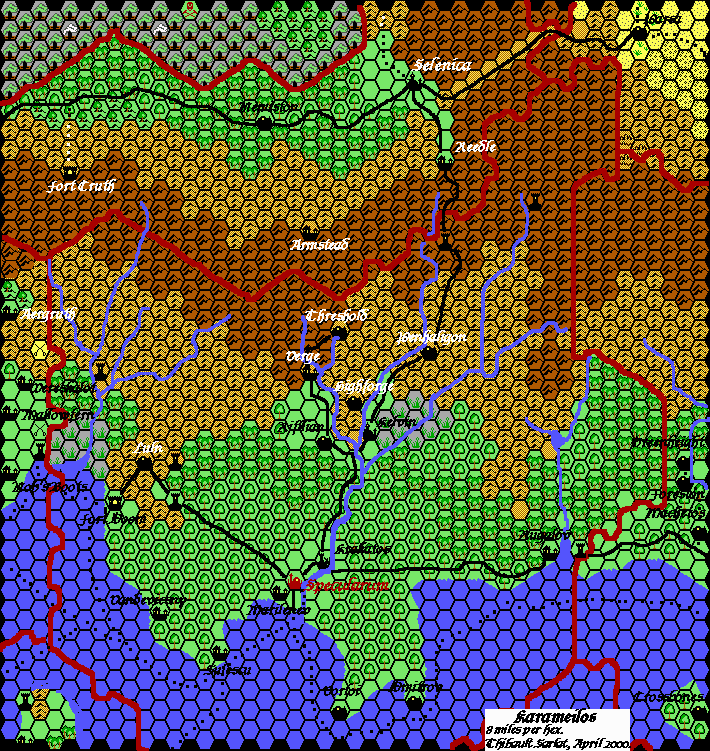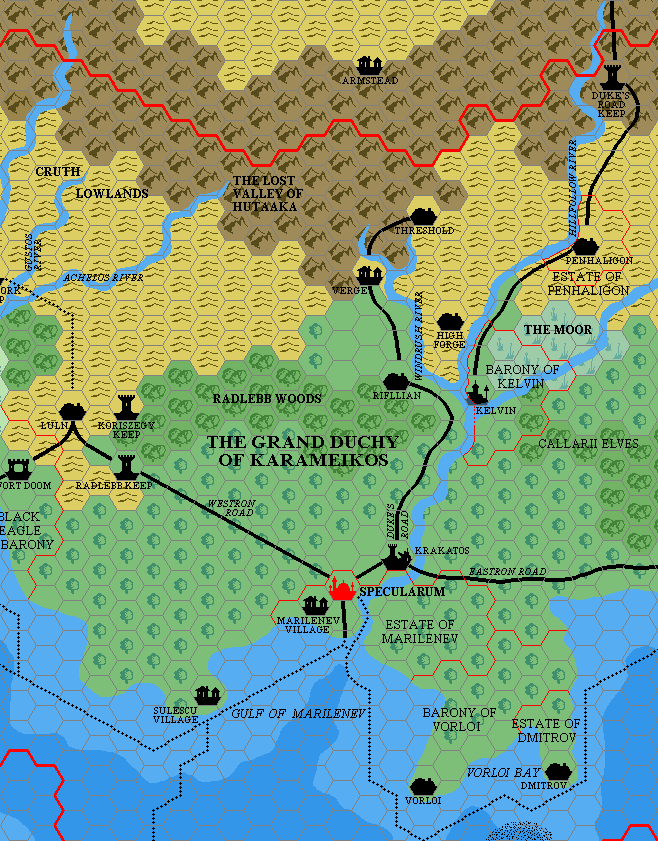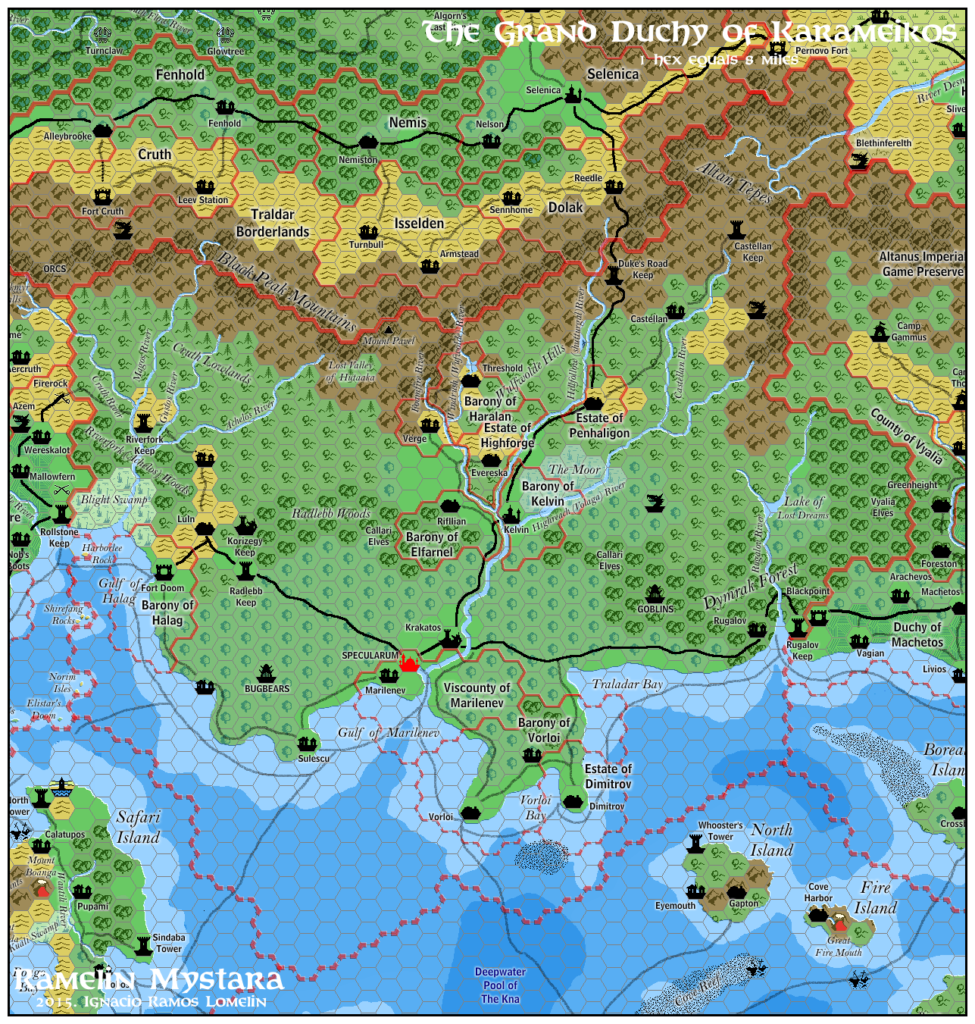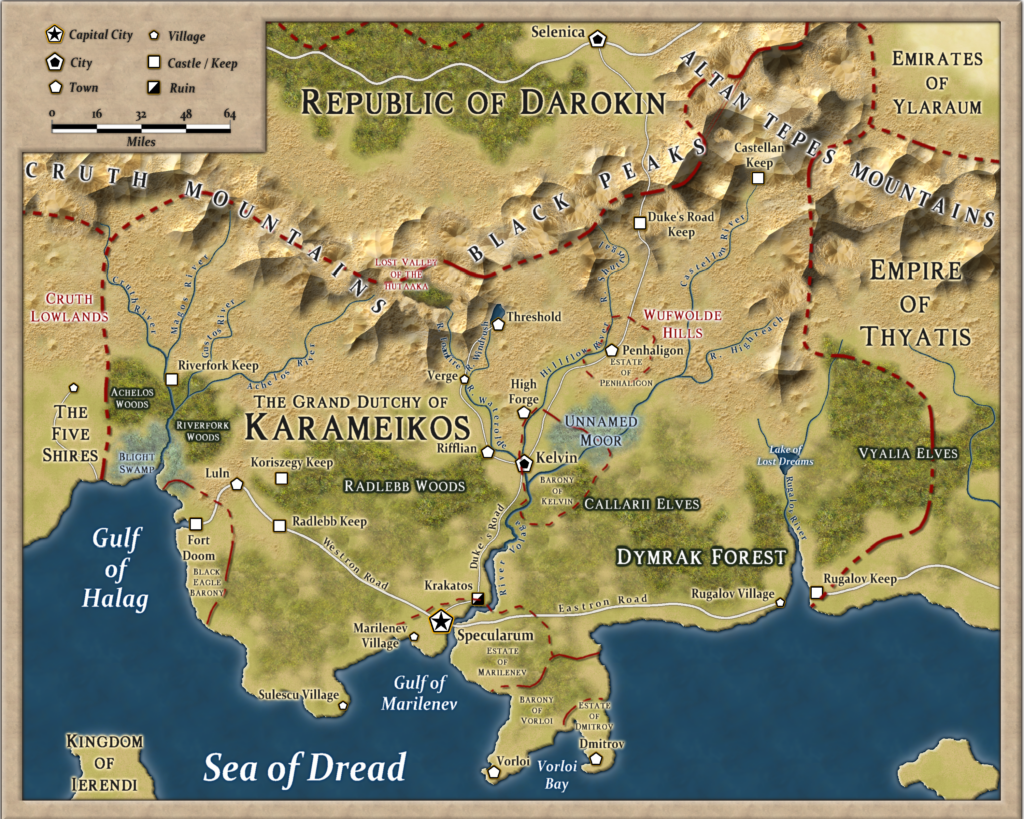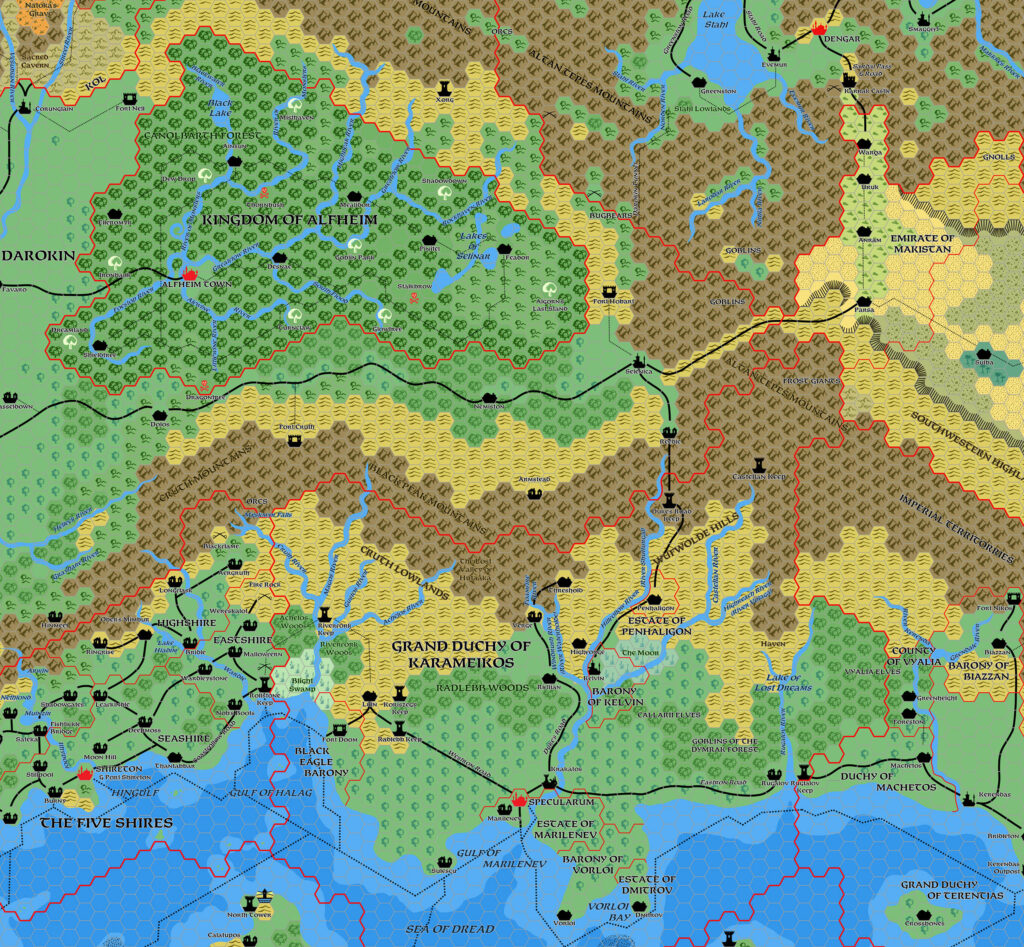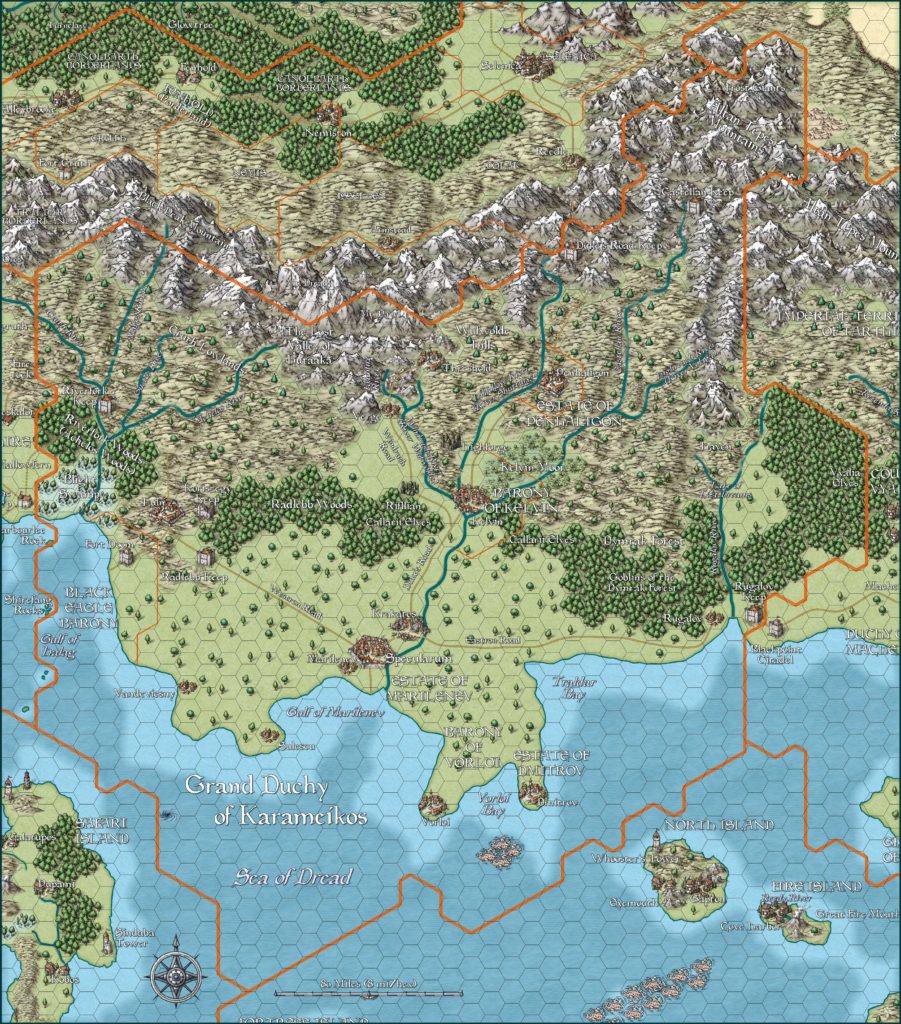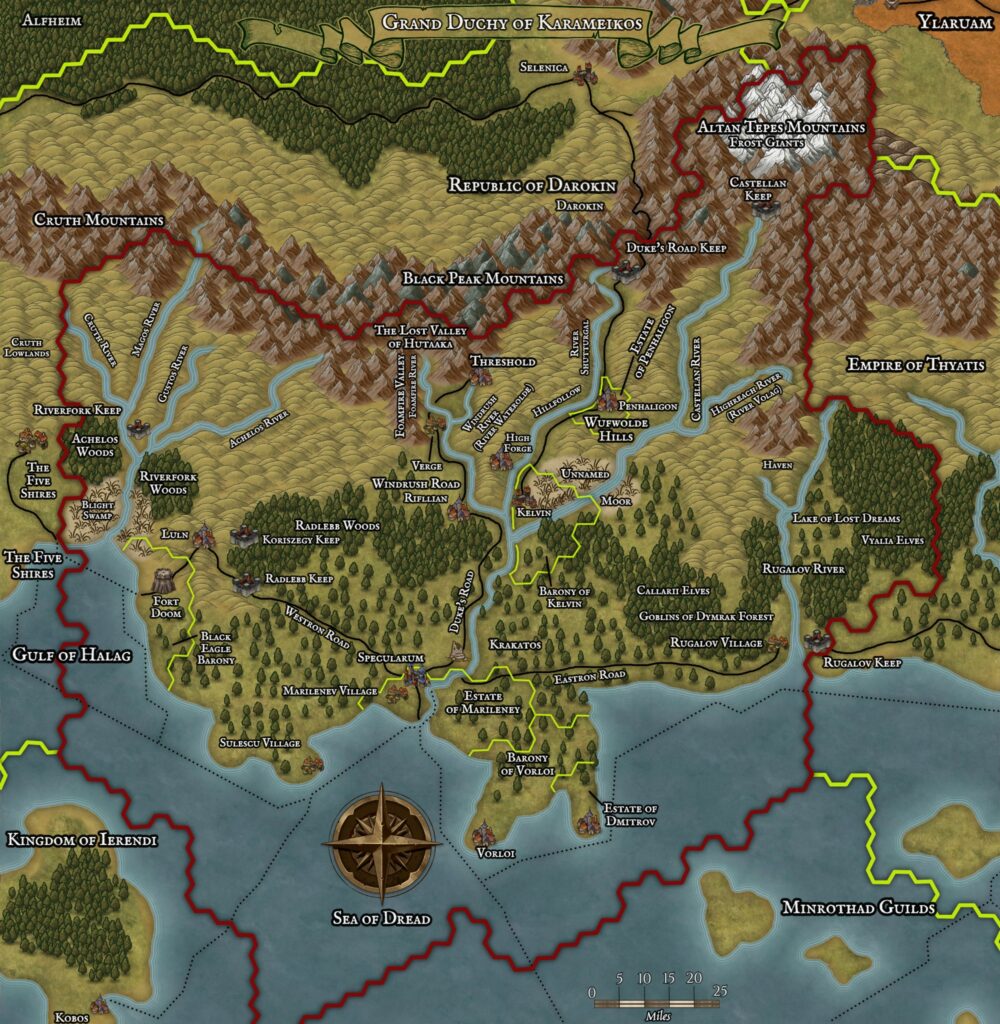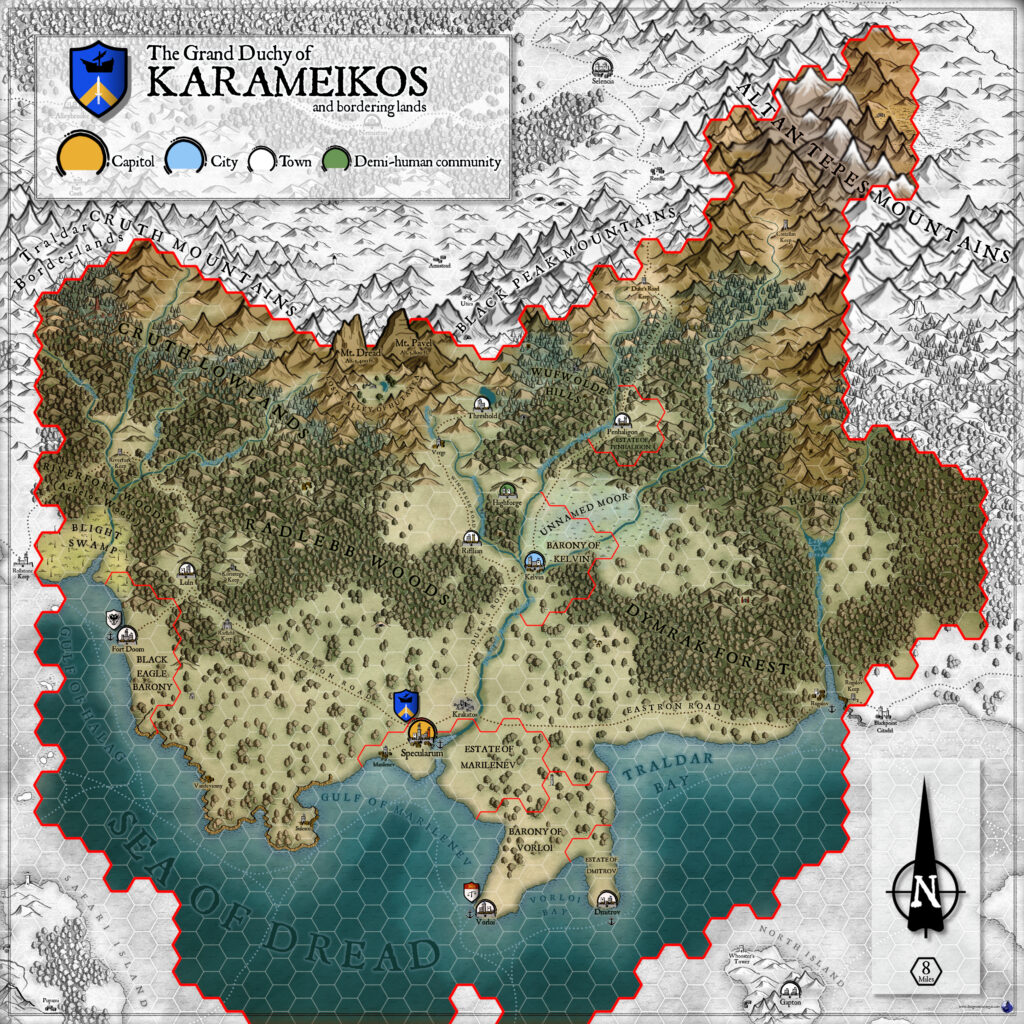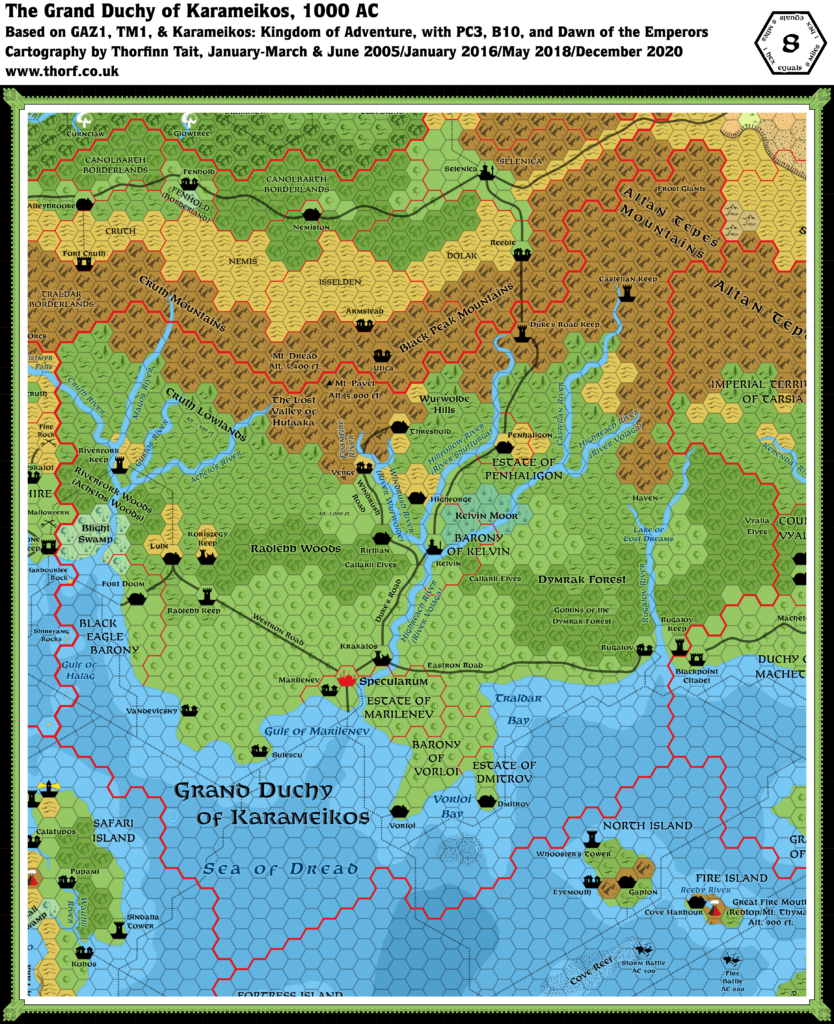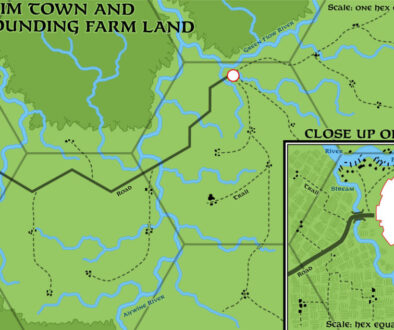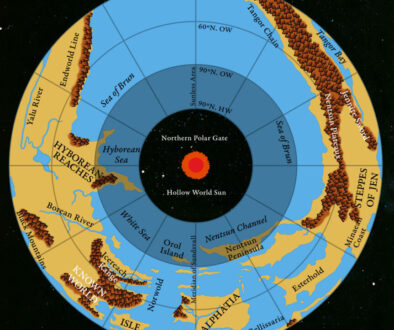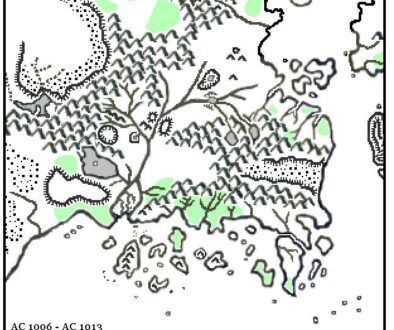Thibault’s Karameikos, 8 miles per hex v1
After starting into the Known World at 24 miles per hex, it was only natural that he would next turn to Karameikos. And that’s exactly what Thibault did, with this rendition of GAZ1’s Karameikos at 8 miles per hex. The angular rivers and roads are a testament to its release before September 1999, when he was still working with Grid’s in-built drawing system.
The actual map has been lost, though the original Grid file as well as a small thumbnail of the finished map are still available. I have therefore reconstructed the map from these two sources, cropping to the dimensions of the thumbnail and redoing the labels. It’s likely not identical to the original, but surely close enough.
Thibault revisited the area less than a year later, recreating it in his new art style with upright hexes. Since it’s not so much an update as a whole new map, I am not including it here.
Fan-made Map by Thibault Sarlat (August 1999)
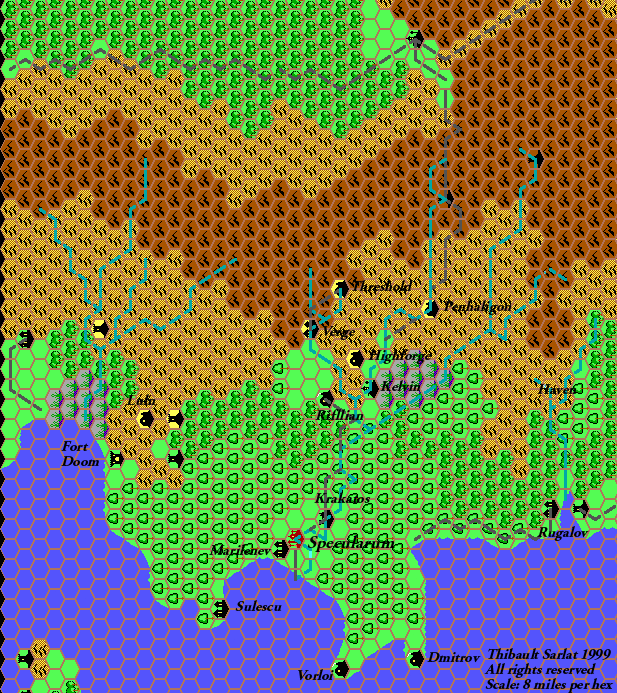
This is an original map created by one of Mystara’s excellent fan cartographers. For more information on the cartographer, including a gallery of all their maps, see also Appendix M: Mappers of Mystara.
Sources
- GAZ1 The Grand Duchy of Karameikos (1987) (PDF at DriveThruRPG)
References
- All of Thibault’s maps at the Atlas of Mystara
- Thibault’s entry in Appendix M: Mappers of Mystara (upcoming)
- Thibault’s author page at the Vaults of Pandius
Chronological Analysis
This is a fan-made map. It was published in 1999. The updated Atlas version of this map is Karameikos, 8 miles per hex. See also Appendix C for annual chronological snapshots of the area. For the full context of this map in Mystara’s publication history, see the upcoming Let’s Map Mystara 1999.
The following lists are from the Let’s Map Mystara project. Additions are new features, introduced in this map. Revisions are changes to previously-introduced features. Hex Art & Fonts track design elements. Finally, Textual Additions are potential features found in the related text. In most cases, the Atlas adopts these textual additions into updated and chronological maps.
Coming Soon

